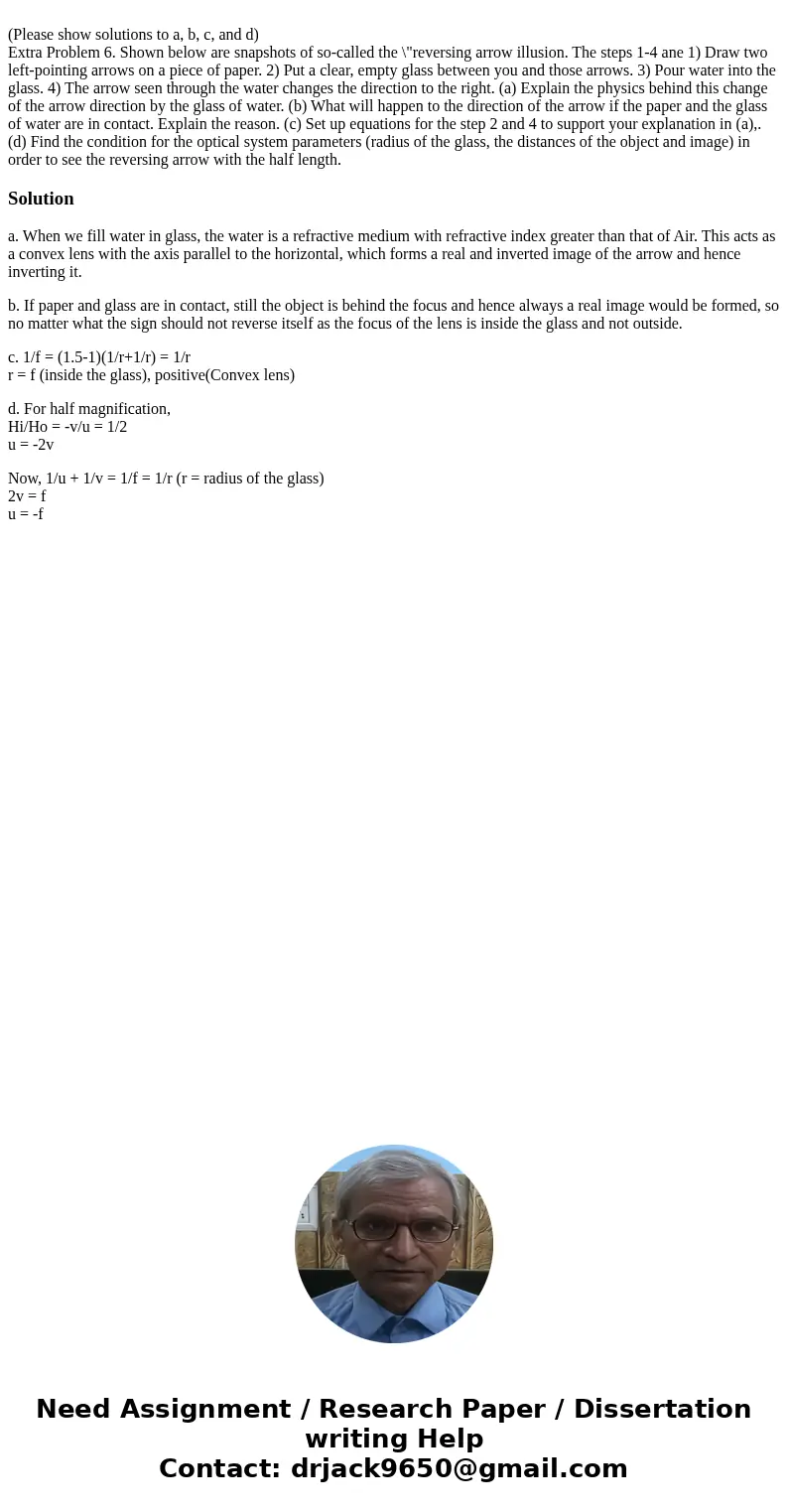Please show solutions to a b c and d Extra Problem 6 Shown b
(Please show solutions to a, b, c, and d)
Extra Problem 6. Shown below are snapshots of so-called the \"reversing arrow illusion. The steps 1-4 ane 1) Draw two left-pointing arrows on a piece of paper. 2) Put a clear, empty glass between you and those arrows. 3) Pour water into the glass. 4) The arrow seen through the water changes the direction to the right. (a) Explain the physics behind this change of the arrow direction by the glass of water. (b) What will happen to the direction of the arrow if the paper and the glass of water are in contact. Explain the reason. (c) Set up equations for the step 2 and 4 to support your explanation in (a),. (d) Find the condition for the optical system parameters (radius of the glass, the distances of the object and image) in order to see the reversing arrow with the half length. Solution
a. When we fill water in glass, the water is a refractive medium with refractive index greater than that of Air. This acts as a convex lens with the axis parallel to the horizontal, which forms a real and inverted image of the arrow and hence inverting it.
b. If paper and glass are in contact, still the object is behind the focus and hence always a real image would be formed, so no matter what the sign should not reverse itself as the focus of the lens is inside the glass and not outside.
c. 1/f = (1.5-1)(1/r+1/r) = 1/r
r = f (inside the glass), positive(Convex lens)
d. For half magnification,
Hi/Ho = -v/u = 1/2
u = -2v
Now, 1/u + 1/v = 1/f = 1/r (r = radius of the glass)
2v = f
u = -f

 Homework Sourse
Homework Sourse